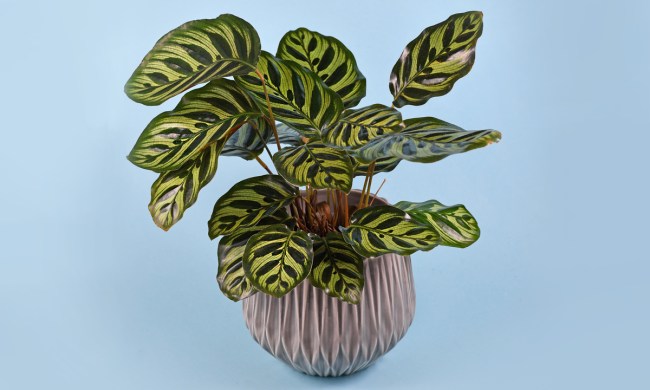Have you ever found yourself wondering what to put in a gardening gift basket for your plant-loving friends? Or maybe you’ve put one together before and they loved it so much you want to give them another — but you don’t want to include the same things? We’ve got you covered! There are plenty of garden gift basket ideas beyond this list so long as you consider the recipient, their unique plant interests, and what they would find really useful.
Some new gardening tools
Every outdoor gardener loves to use their tools, and whether they need a replacement set or some to have on hand as backups, you can’t go wrong with including a small set in a gift basket! This goes for budding gardeners, too. Tools are a great way to help them get started and learn what to do.
This tool set from Zuzuan
A whimsical watering can
Although marketed for kids, this Melissa & Doug chameleon watering can
Best of all, it could help encourage them to broaden their indoor plant collection or to start growing potted plants in general. This chameleon watering can is built to last (as it has to be durable for kids) and features a tail handle with a branch spout. This gift can serve a dual purpose, being both for the recipient and for their child (if they have one) to partake in the love of plant care.
Plant-themed watering globes
Watering glasses are incredibly beneficial for indoor plants! These terracotta mushroom spikes
It’s worth noting, though, that these are not the end-all-be-all of plant watering. They’re meant to be used as a supplementary tool, so go ahead and include that watering can listed in your basket, too!
Ceramic succulent pots (with drainage!)
These four-inch ceramic succulent pots
Not only is the ceramic design eye-catching, these pots have a smooth finish and were made to be durable enough for long-term use. The drainage hole at the bottom means these pots can hold cacti or succulents with ease, and each pot comes with its own drainage tray for excess water. Their small size means they’ll fit on a shelf, on a desk, or on a plant stand while bringing a bit of modern decor into your home.
The Big Book of Blooms
As the next installment in the Big Book series (which you may remember from school libraries or local bookstores), this book will teach you about bird of paradise plants, proteas, cacti, cherry blossoms, wildflowers, and more. This book serves as an introduction to a lot of beautiful plants from a variety of environments and locations and will not only fascinate the plant lovers in your life but educate them as well. It encourages the reader to explore the possibility of growing plants that normally thrive in other regions.
The illustrations in this book are in full color, making it seem as if the plant is right there with you as you read. They’re brought to life and discussed alongside other topics like how to recognize different flowers and their habitats. It’s a must-have for any plant-lover’s bookshelf.
When it comes to putting together a gardening gift basket, keep in mind that the contents should always be personalized. If your recipient doesn’t like to read, switch out the “Big Book of Blooms” for some packets of seeds or maybe a cutting of one of your plants that they’ve been eyeing for awhile. And remember: It’s never a bad time for a new plant.


